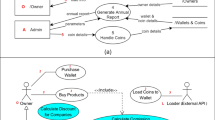Abstract
The last years have seen the emergence of a number of so-called object-oriented analysis and design methods (ooadm) like class-relation, omt, Shlaer-Mellor, etc. In order to cope with the importance and diversity of these offerings, a strong trend toward unification has recently developed. For the time being, this unification movement has a scope mainly limited to notational aspects. In order to be really useful, it should also apply to the organizational aspects, i.e. not only to formalisms but also to processes. A general life cycle reference model called J3 is proposed here as a possible alternative to conventional schemes, giving rise to a regular organization of processes and products in the software development cycle. Since most of these products are expressed in an object-oriented formalism, their interoperation should be addressed in a general way. Instead of using a class-based meta-notation, we have defined, for that purpose, a minimal knowledge representation kernel called sNets, a specific kind of semantic networks. The J3 organization framework and the sNet core notation are the two main components of the Osmosis workbench. The synergy between these notational and organizational concepts gives rise to an original pilot software production scheme.
Résumé
Ces dernières années ont vu l’émergence d’un grand nombre de méthodes dites d’analyse/conception par objets comme classe-relation, omt, Shlaer-Mellor, etc. Afin de pouvoir maîtriser l’importance et la diversité de ces offres, une forte tendance unificatrice s’est récemment développée. Pour le moment, ce mouvement unificateur s’intéresse essentiellement aux aspects notationnels. Pour qu’il soit véritablement utile, il faudrait qu’il s’applique également aux aspects organisationnels, c’est-à-dire pas seulement aux formalismes mais aussi aux procédés. Un modèle général de référence pour le cycle de vie appelé J3 en tant qu’alternative aux schémas classiques et constitué d’une organisation régulière des procédés et des produits dans le cycle de développement du logiciel est proposé. La plupart des produits étant exprimés dans un formalisme à objets, leur interfonctionnement doit être considéré d’une faÇon aussi générale que possible. Au lieu d’utiliser une méta-notation basée sur le concept de classe, un noyau minimal de représentation de connaissances appelé sNets, une forme spécifique de réseaux sémantiques typés, réflexifs et modulaires est défini. Le cadre d’organisation J3 et le noyau de notation des sNets sont les deux composants essentiels de l’atelier Osmosis. La synergie entre ces concepts notationnels et organisation-nels donne naissance à un schéma original de développement de logiciel.
Similar content being viewed by others
References
Bézivin (J.), Lanneluc (J.), Lemesle (R.). Representing knowledge in the object-oriented lifecycle.Tools Pacific’94, Melbourne,Prentice Hall (Dec. 1994), pp. 13–24.
Bézivin (J.). Object-oriented requirement elicitation in the Osmosis project.IEEE International Symposium and Workshop on Systems Engineering of Computer-Based Systems, Tucson, Arizona (6-9 March 1995), pp. 289–298.
Bézivin (J.). Osmosis: an ontology-based meta-case.Sixth Workshop on the Next Generation of CASE Tools, Jyväskylä, Finlande (12–13 June 1995), pp. 137–142. Booch 91 Booch (G.). Object-oriented design with applications.Benjamin/Cummin, Redwood City (1991).
Booch (G.), Rumbaugh (J.). Unified method for object-oriented development documentation set.Version 0.8, Rational Software Corporation (Oct. 1995).
De Champeaux (D.), Lea (D.), Faure (P.). The process of object-oriented design.OOPSLA’92, ACM Sigplan Notices (Oct. 1992), 27, n°10, pp. 45–62.
Gamma (E.), Helm (R.), Johnson (R.), Vlissides (J.). Design patterns elements of reusable object-oriented software.Addison Wesley Professional Computing Series (1994), 395 p.
Jackson (M. A.). System development.Prentice Hall International (1983).
Jackson (M. A.). Software requirement and specifications, a lexicon of practice, principles and prejudices.Addison Wesley, ACM Press (1995), 228 p.
Jacobson (I.), Christerson (M.), Jonsson (P.), Overgaard (G.). Object-oriented software engineering.Addison Wesley (1992), 524 p.
Nierstrasz (O.), Tsichritzis (D.). Object-oriented software composition.Prentice Hall (1995), 361 p.
Pintado (X.). Gluons and the cooperation between software components.Nierstrasz 95, pp. 321-347.
Rumbaugh (J.), Blaha (M.), Premerlani (W.), Eddy (F.), Lorensen (W.). Object-oriented modeling and design.Prentice Hall (1991), 500 p.
Shlaer (S.), Mellor (S. J.). Object-oriented system analysis: modeling the world in states.Prentice Hall Int Inc. (1992).
Author information
Authors and Affiliations
Rights and permissions
About this article
Cite this article
Bézivin, J. The Osmosis path to method unification. Ann. Télécommun. 51, 451–458 (1996). https://doi.org/10.1007/BF02997707
Received:
Accepted:
Issue Date:
DOI: https://doi.org/10.1007/BF02997707
Key words
- Software engineering
- Object oriented method
- Reference model
- Software workshop
- Semantic network
- Knowledge representation




